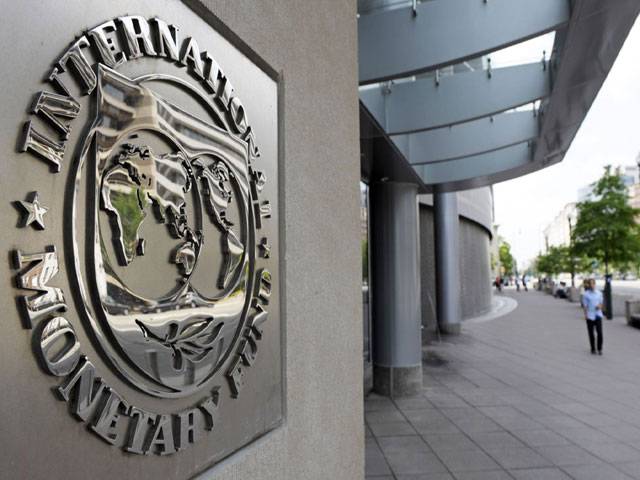ISLAMABAD - Expressing satisfaction over current economic situation, International Monetary Fund (IMF) has asked to do more to achieve structural reforms agenda amid security situation, with alarming terrorist activity, as well as sectarian violence and criminal activity which continue to depress investment and growth.
IMF has noted legal challenges must be resolved in order to implement the envisaged gas levy, which will create space for increased investment spending later in the year. There are risks to the revenue projection. Specifically, the current Gas Infrastructure Development Cess (GIDC)-while already levied on consumers by the gas companies-has yet to enter the government treasury due to legal challenges. In the absence of the GIDC money, the government would have to continue with the present reduced investment spending pace, or implement alternative revenue measures, to ensure their ability to continue meeting the deficit targets. Similarly, the political support is required to bring reforms in tax system by bringing non-taxpayers into tax net instead of imposing new taxes on already taxpayers.
The IMF has released the details of first review under extended fund facility. The Fund noted that Pakistan has met all the performance criteria for the first programme review with the exception of that on net international reserves (NIR) by end September 2013. The IMF has released the second tranche worth of $554 million under $6.64 billion extended fund facility programme after showing satisfaction on Pakistan’s economy.
The report noted that State Bank of Pakistan (SBP) policies have thus far failed to give sufficient priority to the crucial challenge of rebuilding reserves. “In the coming months, the SBP must unhesitatingly use every policy tool at its disposal to boost reserves, including adjusting the policy rate, intervening to purchase reserves on the spot market, and allowing greater flexibility of the exchange rate”, the Fund directed. The net $200 million the SBP purchased from the foreign exchange market since November 1 constitutes merely a first step in this direction. Continued strong efforts will be required to achieve the revised NIR targets and ease current risks. While these actions might lead to a temporary increase in inflation, over time they will encourage exports, discourage imports, and help increase capital inflows. The government’s promised steps to attract additional foreign exchange via privatisations, increasing foreign currency borrowing (while decreasing rupee borrowing), and accelerating disbursements from international partners will provide critical support to the SBP’s efforts.
According to the report, inflation is projected to hover around 10 percent in the remainder of FY 2013/14. The current account deficit is expected to be about 1 percent of GDP, higher than the initial programme forecast by about 0.4 percent of GDP. Imports are expected to grow by 8 percent (1 percent higher than expected earlier), and exports are expected to grow more slowly. Gross reserves are projected to recover to $9.5 billion.
For end-September, the overall balance was $1 billion worse than the programme. The current account was somewhat weaker due mostly to export performance and the fact that disbursement of the US Coalition Support Fund payment was later than the authorities had anticipated.
These developments were partly offset by higher remittances inflows. However, the financial account was significantly worse than expected due to lower foreign direct investment and lower other net capital flows (including net sales by the SBP in the spot market rather than purchases). The BOP forecast has also been revised downward for the remainder of the year. Exports are now expected to grow more slowly, modestly worsening the current account (by 0.4 percent of GDP). Baseline capital flows are also lower, with fewer private inflows already in Q2 and the weaker trend is expected to persist. Some disbursements from development partners are now delayed versus original projections (into Q4 or FY 2014/15), leaving a particularly tight balance of payments situation between now and March 2014.
Overall, GDP is expected to expand by 2.8 percent (0.3 percent higher than initial programme forecast). As reforms in the energy sector take hold, the manufacturing sector is expected to expand faster than expected initially, although growth in the agriculture sector, in cotton production in particular, is projected to be slow.
Thursday, April 18, 2024
IMF asks to do more to achieve reforms agenda

Stefanos Tsitsipas advances in Barcelona
4:19 PM | April 18, 2024
Met Office predicts more rains across country till April 29
2:51 PM | April 18, 2024
Punjab changes school timings for summer season
1:55 PM | April 18, 2024
Enemies of Pakistan are unable to digest investment in the country: Ataullah Tarar
1:29 PM | April 18, 2024
IHC restores Bushra Bibi's appeal for shifting to Adiala Jail from Bani Gala
1:24 PM | April 18, 2024
Hepatitis Challenge
April 18, 2024
IMF Predictions
April 18, 2024
Wheat War
April 18, 2024
Rail Revival
April 17, 2024
Addressing Climate Change
April 17, 2024
Justice denied
April 18, 2024
AI dilemmas unveiled
April 18, 2024
Tax tangle
April 18, 2024
Workforce inequality
April 17, 2024
New partnerships
April 17, 2024
ePaper - Nawaiwaqt
Advertisement
Nawaiwaqt Group | Copyright © 2024





